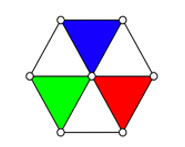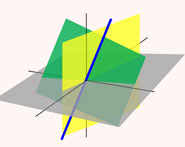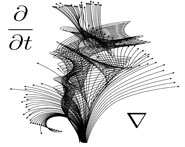


 تاريخ الرياضيات
تاريخ الرياضيات
 الرياضيات في الحضارات المختلفة
الرياضيات في الحضارات المختلفة 
 الرياضيات المتقطعة
الرياضيات المتقطعة
 الجبر
الجبر
 الهندسة
الهندسة 
 المعادلات التفاضلية و التكاملية
المعادلات التفاضلية و التكاملية 
 التحليل
التحليل
 علماء الرياضيات
علماء الرياضيات |
Read More
Date: 14-11-2017
Date: 25-10-2017
Date: 3-11-2017
|
Died: 1990 in Halle, Germany

Ott-Heinrich Keller was born in Frankfurt (Main). After completing his school education, he studied at the universities of Frankfurt, Vienna, Berlin and Göttingen. His doctoral studies were supervised by Max Dehn and, in 1929, he was awarded a doctorate for his thesis Über die lückenlose Erfüllung des Raumes mit Würfeln. Following his graduation he was appointed as an assistant at the University of Frankfurt where he remained until 1931, the year in which he published his second paper Die Homoiomorphie der kompakten konvexen Mengen im Hilbertschen Raum. Keller then went to the Technical University of Charlottenburg in Berlin where he was appointed as assistant to George Hamel. There he submitted his habilitation thesis in 1933 with a work on Cremona transformations. In the same year he published two papers related to his thesis, namely Über eine diskontinuierliche Gruppe von Cremona-Transformationen, andCremona-Transformationen algebraischer Kurven.
Of course 1933 was the year that Hitler came to power and Keller continued to work at the Technical University of Charlottenburg in Berlin during the years leading up to World War II continuing to work there during the war itself. He had published a number of papers on geometry and algebraic geometry between 1933 and 1939, but only one publication Eine Bemerkung zu den Plückerschen Formeln (1943) between 1940 and 1948. During the war he undertook war related work and in 1941 was assigned to the naval college in Flensburg as a teacher for mathematics and mechanics. The naval station and academy at Flensburg had been established before World War II, and served an important role for Germany throughout the war.
In the years immediately following World War II Keller worked in the Universities of Kiel and Münster, then in 1947 he was appointed as an ordinary professor at the Technischen Hochschule in Dresden. In 1949 he published Zu einem Satze von H W E Jung über ganze birationale Transformationen der Ebene and, by a strange coincidence, following the retirement of Heinrich W E Jung from the chair of mathematics at Halle, Keller was appointed to Jung's chair at the Martin Luther University of Halle-Wittenberg in 1951. From that time on until his death he carried out scientific activities of depth and breadth at Halle and used his talents to enrich the mathematical studies of the circle of pupils and friends around him. At Halle, he led the Mathematical Institute and he also gave leadership for several specialist areas of mathematics. He was an active member of the German Mathematical Society being a member of the executive committee from 1960 to 1966 and he was chairman of the Society from 1960 to 1961. He was member of the German Academy of Scientists Leopoldina and the Academy of Sciences of Saxony.
As to Keller's mathematical contributions, the author of [1] writes:-
Looking at Keller's work one notices immediately that he made contributions to several, not only all neighbouring, areas of mathematics, the most important being to geometry, to algebraic geometry and to topology; in addition he studied number theoretic and analytic topics as well as those of a more philosophical character.
In 1954 Keller published his first book Geometrie der Zahlen which contained many of his contributions to the topic. D Derry, in a review of the text, writes:-
This is an account of results in the theory of numbers obtained by geometric methods up to 1951. Among the chapter headings are convex bodies in lattices, star bodies, linear forms, minima of homogeneous forms, inhomogeneous forms, definite quadratic forms, continued fractions and algebraic numbers. Some proofs of fundamental results are sketched. The results on star bodies which have been obtained in the last two decades are listed with considerable completeness. Included among these is a paragraph of conjectures made by Mahler. The chapter on definite quadratic forms contains a clear account of the work done on the reduction problem.
His second book was aimed at students, rather than researchers. The was the text Analytische Geometrie und lineare Algebra published in 1957. Keller writes in the introduction:-
The book is intended to introduce beginners to geometric and algebraic thought, so that it proceeds constantly from the concrete to the abstract. Axiomatics are omitted. An attempt is made to clarify the algebraic kernel of geometric concepts and methods of proof.
Keller retired in 1971 from his professorship in Halle. However he continued to be active in mathematical research publishing papers such as Normalformen für Flächen 3. Ordnung (1974), Innere Punkte von kompakten konvexen Mengen unendlicher Dimension (1980), Die Homologiegruppen der Mannigfaltigkeit, die aus den linearen k-Räumen auf einer nichtausgearteten 2k-Quadrik besteht (1980), Die Zahl (1983), and Das Zählen als angeborene Verhaltensweise (1984). He also published the book Vorlesungen über algebraische Geometrie in 1974.
Articles:



|
|
|
|
صحة الفم في خطر.. 5 أخطاء شائعة أثناء تنظيف الأسنان
|
|
|
|
|
|
|
بيل غيتس: 3 مهن ستصمد في وجه الذكاء الاصطناعي
|
|
|
|
|
|
|
قسم شؤون المعارف ووفد من جامعة البصرة يبحثان سبل تعزيز التعاون المشترك
|
|
|